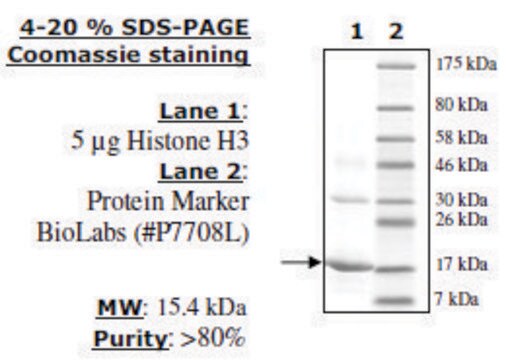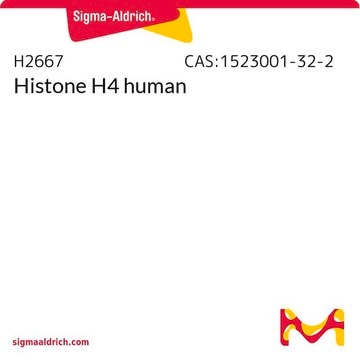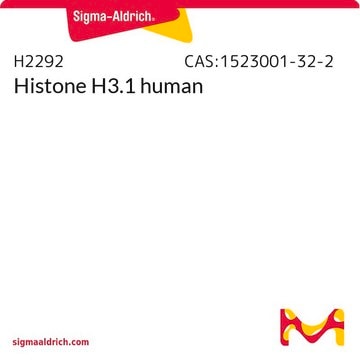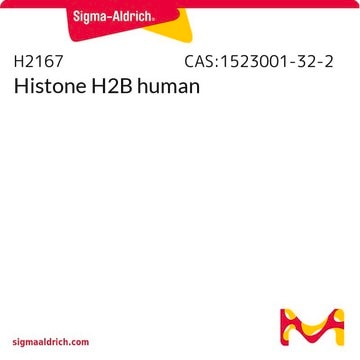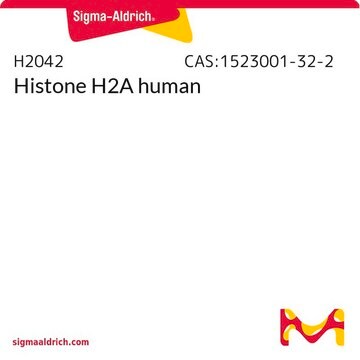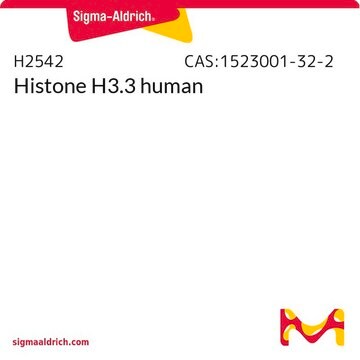SRP0408
Histone Octamer full length human
recombinant, expressed in E. coli, ≥90% (SDS-PAGE)
Sinónimos:
Histone Octamer
About This Item
Productos recomendados
origen biológico
human
recombinante
expressed in E. coli
Ensayo
≥90% (SDS-PAGE)
Formulario
aqueous solution
mol peso
113.8 kDa
envase
pkg of 100 μg
técnicas
cell based assay: suitable
solubilidad
water: soluble
Condiciones de envío
dry ice
temp. de almacenamiento
−70°C
Información sobre el gen
human ... HIST1H2BG(8339) , HIST2H2AC(8338) , HIST3H3(8290) , HIST4H4(121504)
Descripción general
The histone octamer is a versatile protein assembly that has evolved to serve two opposing functions within the cell. It is required to bind and bend DNA to achieve fivefold compaction and partial charge neutralization of DNA, while also needing to release specific segments of DNA in a coordinated manner to allow the access of DNA-processing enzymes at the appropriate time. A modular assembly of histone dimers (consisting of either H2A and H2B or H3 and H4) binds to approximately 30 bp of DNA and is connected in a flexible yet stable manner to form a fundamental superhelical ′ramp′ with evenly spaced DNA-binding platforms.
Aplicación
Acciones bioquímicas o fisiológicas
Código de clase de almacenamiento
10 - Combustible liquids
Clase de riesgo para el agua (WGK)
WGK 1
Punto de inflamabilidad (°F)
Not applicable
Punto de inflamabilidad (°C)
Not applicable
Elija entre una de las versiones más recientes:
Certificados de análisis (COA)
¿No ve la versión correcta?
Si necesita una versión concreta, puede buscar un certificado específico por el número de lote.
¿Ya tiene este producto?
Encuentre la documentación para los productos que ha comprado recientemente en la Biblioteca de documentos.
Los clientes también vieron
Nuestro equipo de científicos tiene experiencia en todas las áreas de investigación: Ciencias de la vida, Ciencia de los materiales, Síntesis química, Cromatografía, Analítica y muchas otras.
Póngase en contacto con el Servicio técnico
